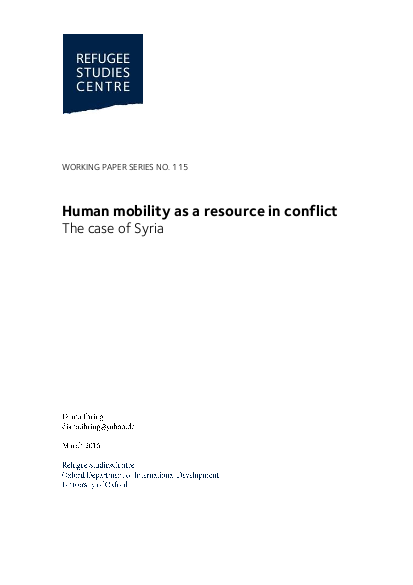
Human movement remains the primary unit of analysis in much theorising on forced migration and humanitarian practice in conflict. Whilst movement is often portrayed as an indicator of vulnerability, sometimes even as a problem per se, I suggest thinking of mobility, taking this broader term to signify the ‘freedom to choose where to be’ (de Haas 2014), as a resource through which one can mitigate the consequences of violence and conflict and access a better life. In this context, vulnerability, understood as the capacity to cope with conflict, is de-coupled from movement, since mobility, as the ability to choose where to be, includes the option to stay. Class (Van Hear 2004, 2014), encompassing differential access to economic, social and cultural forms of capital, shapes the ability to rely on mobility as a resource. Mobility in conflict is both socially stratified and socially stratifying as, by being differently available, mobility empowers individuals who already have more extensive forms of capital to rely on, whilst increasing the vulnerability of those who do not. The case of Syria displays many of these dynamics and illustrates the urgency of adopting a wider lens in the analysis of mobility and vulnerability in conflict.